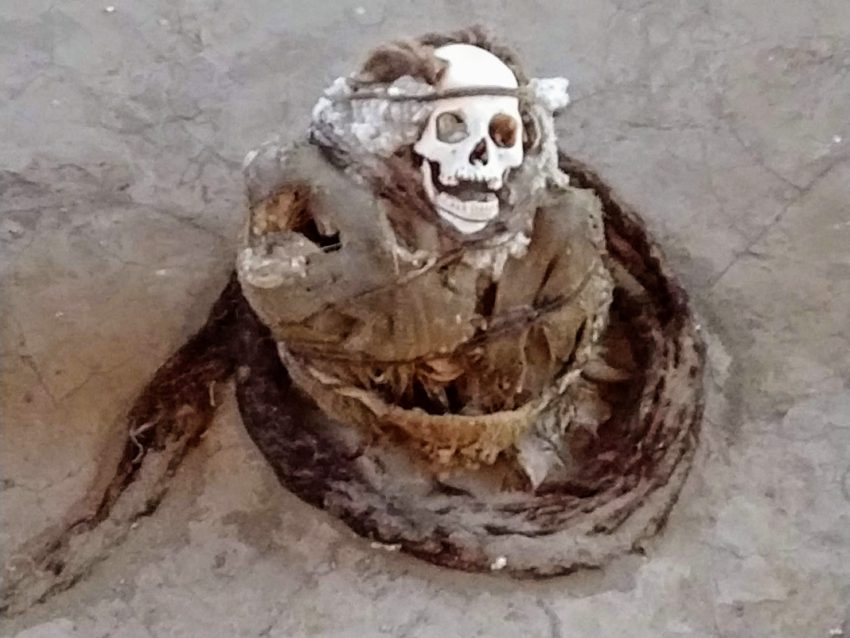If you’ve heard of the Nazca lines in Southern Peru, you’ve probably heard the “alien theory” – that they were drawn to show alien spaceships where to land. After all, what other reason would ancient people have to draw miles-long lines and giant figures in the desert that could only be seen from high above?
The alien theory is, of course, absurd. But it persisted for decades despite the scientific findings of Maria Reiche – a German-born Peruvian mathematician, archaeologist and technical translator – who spent 40 years studying the area. Thanks to her persistence, and additional discoveries from subsequent researchers, we now have a plausible explanation. Taken together, the Nazca lines, figures, cemeteries and ruins offer a cautionary tale of a civilization’s slow decline and eventual annihilation.
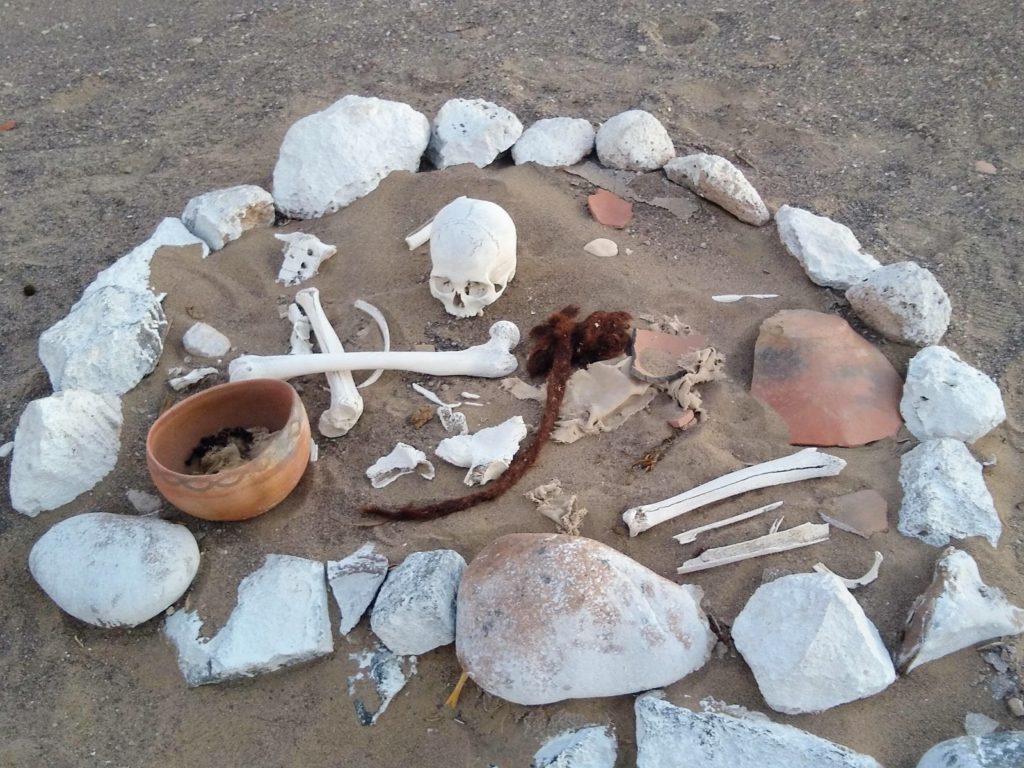
Nazca lies roughly halfway between Lima and Arequipa along the Pan American highway, which follows the western coastline of Peru and continues beyond, into Ecuador and Columbia. The small city of 25,000 people is reached easily via bus (we chose Cruz del Sur, a luxury line): 7.5 hours South from Lima or 9 hours north from Arequipa. The area itself is arid and desolate: a vast desert flanked by cleaved mountains and eternally sunny skies. In fact, Nazca averages only 5 hours of rain per year, according to our guide, Julio.
We paid Julio $100 for more than six hours of exploration, which was both more affordable and more educational than the 1-hour flight that would have set us back $95 each, with little explanation of what we were seeing. We started by hiking up a local cerro (hill) that offers an overhead view of a vast matrix of lines that disappear into the horizon. These lines are virtually invisible from ground level, which explains why they weren’t officially discovered until 1941, when Reiche first saw them while on a flight with American historian Paul Kosok, for whom she made travel arrangements as his assistant while he studied Peru’s ancient irrigation systems.
In many places, the lines are a mere 5 centimeters deep and up to 15 centimeters deep in others. They are easily drawn by simply brushing a path through the top layer of reddish-brown oxidized pebbles, revealing the lighter-colored sub-soil underneath. Julio explained that the oxidized pebbles framing the lines release gases that form a protective shield that prevents the wind from covering the lines immediately with debris. This is why Reiche was able to still see the lines thousands of years after they had been drawn. She spent years in the desert with brooms, “cleaning” the lines to make them more visible and easier to follow.
Reiche and Kosok found that some of the lines converged at the point of the winter solstice sunrise, while others converged at the summer solstice sunrise. Further research indicated that still other lines were directional, leading to the ocean, the Andes, and the Amazon. Those were marked with giant images of a whale, a condor, and a monkey, respectively. Other figures present in the area included a hummingbird, a tree, and a frog, which is referred to as “los manos” because the frog’s feet resemble human hands.
According to Julio, when Reiche followed the lines she found small mounds of rocks along the path. Digging into the mounds, she discovered broken pottery painted with imagery that corresponded to the figures the lines crossed: condor pottery buried along the line leading to the Andes, tree pottery buried on the lines crossing the giant tree. Carbon dating revealed that the pottery along the directional lines was older than the pottery dotting the lines leading to the tree, frog, hummingbird and other figures, including an iguana, a dog, a flower, a spider, an “astronaut,” and a parrot. Using this data, she determined that the astronomical calendar was created first, followed by the map, and then followed by the additional figures.
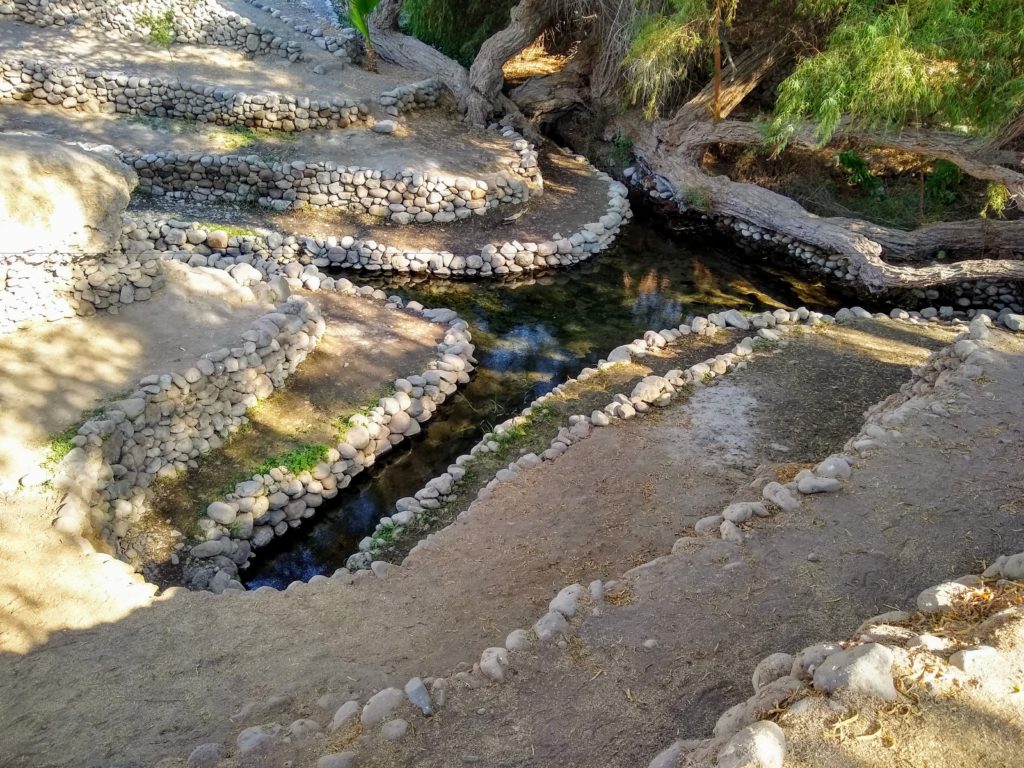
During the several centuries that the Nazca people lived here, they also built puquios, an elaborate system of subterranean aqueducts that included step wells for direct access to water and spiraling tunnels that channeled wind into underground canals, moving water from the aquifers to the places that needed irrigation. In addition, they constructed Cahuachi, an enormous ceremonial center that drew pilgrims from hundreds of miles away. Visitors brought offerings of exotic animals, shells and precious minerals to the priests who performed auspicious rites and animal sacrifices to appease the gods.
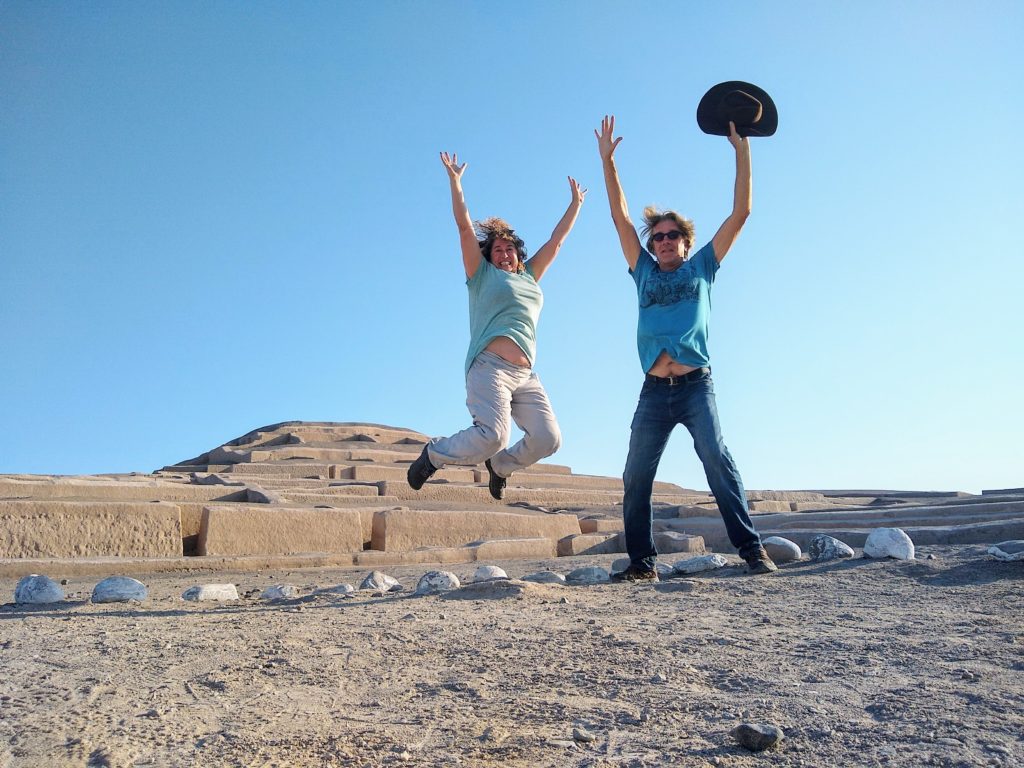
Reiche concluded that the tree, hummingbird, and frog figures were created as offerings to the gods during a prolonged period of drought. The tree was a symbol of life, the hummingbird signified fertility, and the frog represented water. When these offerings failed to return water and fertility to the increasingly arid landscape, they resorted to human sacrifice. According to Julio, it was an honor to be chosen as a sacrificial offering, which involved imbibing ayahuasca and inhaling hallucinogenic powder from the San Pedro cactus before being beheaded. The bodies were placed in a fetal position for rebirth and wrapped in several layers of cotton clothing. The heads – with wide open mouths to allow the release of the spirit – were placed separate from the body in the same tomb, along with pottery, shells, and other offerings to the gods.
Humans sacrificed ritually were treated differently from enemies killed by Nazca “headhunters,” who sometimes placed their victims’ heads on spikes for display. The mouths of the enemies were pinned shut with cactus spines, to prevent the spirit’s release and thwart rebirth.
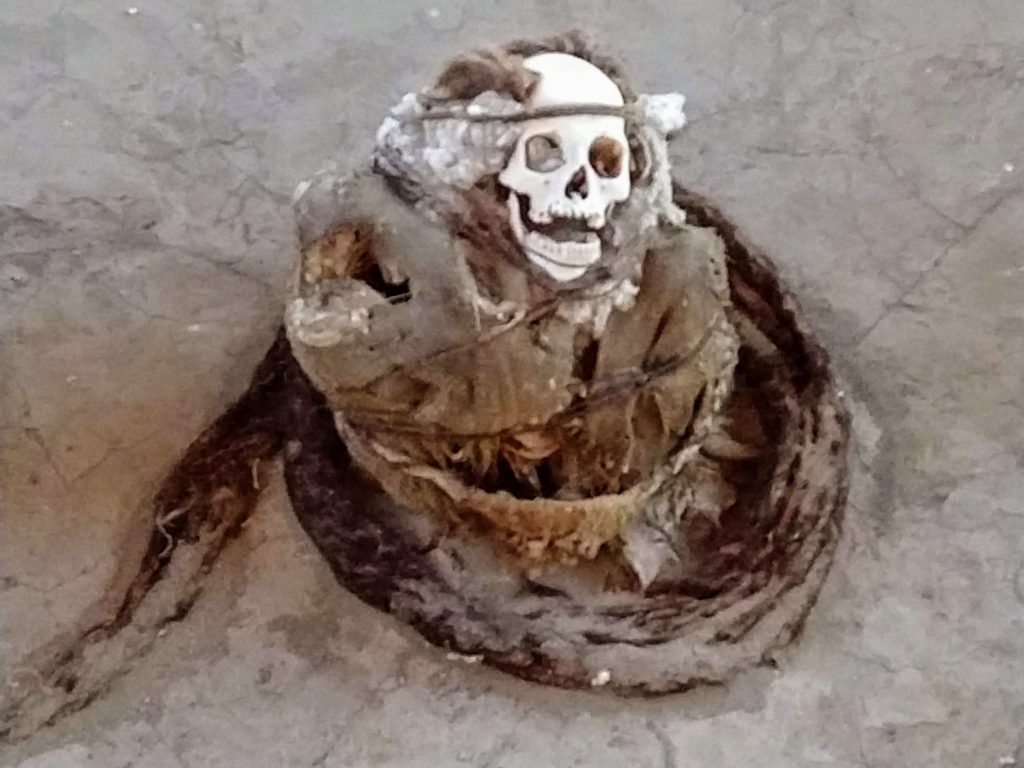
When the human sacrifices failed to quell the drought, the Nazca abandoned the cities and ceremonial centers to live in small family groups farther south by rivers and oases. Rather than cooperating in the face of a continued lack of resources, the Nazca chose to fight among themselves over access to water. The resulting cemetery was pillaged by grave robbers in the 1920s and partially excavated by archaeologists in the 1990s. The scientists determined that those who were killed on the same day were buried together in shared tombs. DNA testing determined that the tombs of non-family members in the Chauchilla Necropolis included walls separating the mummies, whereas tombs of family members did not have walls.
When the Wari people arrived in the area in roughly 200 AD, the Nazca population had dwindled significantly, and those remaining were in poor health. Julio explained that, rather than incorporating these “degraded” people into their expanding empire, the Wari wiped them out entirely. By the time the Incas arrived a hundred or so years later, the Nazca civilization had disappeared completely, including the language. Based on descriptions by the Wari, the Incas named the area NaNazca, a Quechua term that means “tormented” or “sore.”

New figures have been discovered on the landscape in the past 50 years, including the drawing of an “alien” that seemed to support the extra terrestrial theories of the 1970s. According to Julio, workers building roads for the erection of power lines noticed some faded figures in a nearby hillside and reported it to local authorities. An earthquake had caused the figures to be partially obscured by falling debris, but archaeologists were able to “clean” the lines to reveal figures of a royal family and of a humanoid with an oversized head and eyes. Scientists have since determined that the “alien” figure likely represented a shaman under the ritualistic influence of hallucinogens from the San Pedro cactus. They have also surmised that these figures may have actually been drawn by the Paracas people, who predated the Nazca.
Scientists have further determined that the ceremonial center extends far beyond the seven-kilometer-square area already excavated, and the cemetery contains hundreds more tombs than the dozen or so currently on display for tourists. So, while the bloodlines and language of the Nazca civilization have been entirely wiped out by drought, famine, internal warfare, and eventual extermination by the Wari, their legend lives on as new secrets are slowly revealed in the lines, figures, pyramids, mummies, and artifacts they left behind. It remains to be seen if we will learn the lessons of how to manage resources in a time of extreme climate change.
